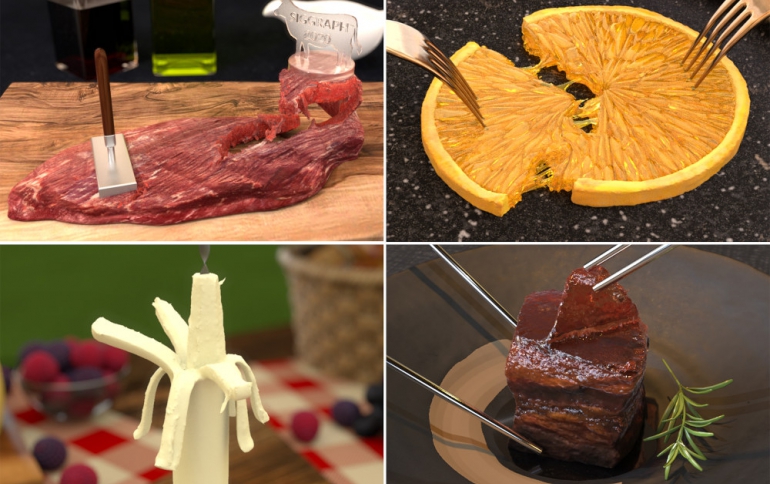
SIGGRAPH 2020 Technical Papers Reveal the Latest Trends in Computer Graphics
SIGGRAPH 2020 announced 163 selected research projects from 24 countries as part of its world-renowned Technical Papers program.
Throughout its now 47-year history, the conference has continuously delivered cutting-edge research across the many subfields of computer graphics. With its recent move to virtual, SIGGRAPH 2020 is working with contributing researchers to offer a new way for participants to discover this content, and will announce details in the coming weeks.
Each year, the SIGGRAPH Technical Papers program sets the pace for what’s next in visual computing. From 443 submissions, with additional selections out of peer-reviewed journal ACM Transactions on Graphics (TOG), experts on the 2020 program jury chose each project through a double-blind review process. Emerging as trends from this year’s selections were the pervasiveness of deep learning — on top of use for images, new applications are proposed for animation, geometry, and more — and a move “back to basics” through use of 2D graphics for things like icons, sketches, diagrams, and strokes.
Along with new research from Stanford University, Facebook, Microsoft, Pixar Animation Studios, Google, MIT, and NVIDIA, highlights from the 2020 Technical Papers program include:
- RoboCut: Hot-wire Cutting With Robot-controlled Flexible Rods
Authors: Simon Duenser and Stelian Coros, ETH Zurich; Roi Poranne, ETH Zurich and University of Haifa; Bernhard Thomaszewski, Université de Montréal
This paper presents trajectory optimization for robotic hot-wire cutting using flexible tools. In it, the team proposes a framework that addresses physical modeling, non-rigid surface matching, and collision avoidance in a unified manner. - AnisoMPM: Animating Anisotropic Damage Mechanics
Authors: Joshuah Wolper, Minchen Li, Yu Fang, Ziyin Qu, Jiecong Lu, Meggie Cheng, and Chenfanfu Jiang, University of Pennsylvania; and, Yunuo Chen, University of Pennsylvania and University of Science and Technology of China
With this paper, researchers present AnisoMPM: a robust and general approach that couples anisotropic damage evolution and anisotropic elastic response to animate the dynamic fracture of isotropic, transversely isotropic, and orthotropic materials. - Unsupervised K-modal Styled Content Generation
Authors: Omry Sendik and Daniel Cohen-Or, Tel Aviv University; Dani Lischinski, The Hebrew University of Jerusalem
This paper introduces uMM-GAN, a novel architecture designed for unsupervised generative modeling of multi-modal distributions. It effectively disentangles between modes and style, thereby providing an independent degree of generation control. - Continuous Multiple Importance Sampling
Authors: Rex West and Toshiya Hachisuka, The University of Tokyo; Iliyan Georgiev, Autodesk; and, Adrien Gruson, McGill University
Researchers from The University of Tokyo, Autodesk, and McGill University present a generalization of multiple importance sampling to uncountably infinite sets of techniques, equipped with a corresponding balance heuristic and a practical stochastic estimator. - Quanta Burst Photography
Authors: Sizhuo Ma, Shantanu Gupta, and Mohit Gupta, University of Wisconsin-Madison; and, Arin C. Ulku, Claudio Bruschini, and Edoardo Charbon, École Polytechnique Fédérale de Lausanne
This paper presents quanta burst photography, a computational photography technique that leverages single-photon cameras as passive imaging devices for photography in challenging conditions, including ultra low light and fast motion. - Incremental Potential Contact: Intersection- and Inversion-free, Large-deformation Dynamics
Authors: Minchen Li, University of Pennsylvania and Adobe Research; Zachary Ferguson, Teseo Schneider, Denis Zorin, and Daniele Panozzo, New York University; Timothy Langlois and Danny M. Kaufman, Adobe Research; and, Chenfanfu Jiang, University of Pennsylvania
In this paper, researchers propose Incremental Potential Contact (IPC) for robust and accurate time stepping of nonlinear elastodynamics. IPC guarantees intersection- and inversion-free trajectories regardless of materials, time-step sizes, velocities, or deformation severity.
For even more highlights, check out the Technical Papers Preview below:













